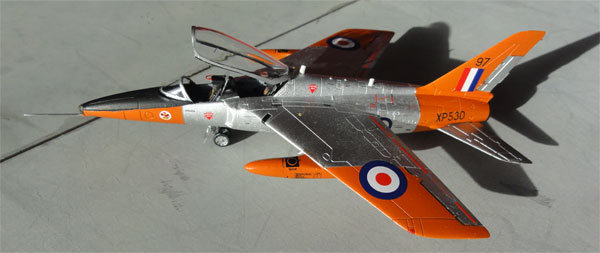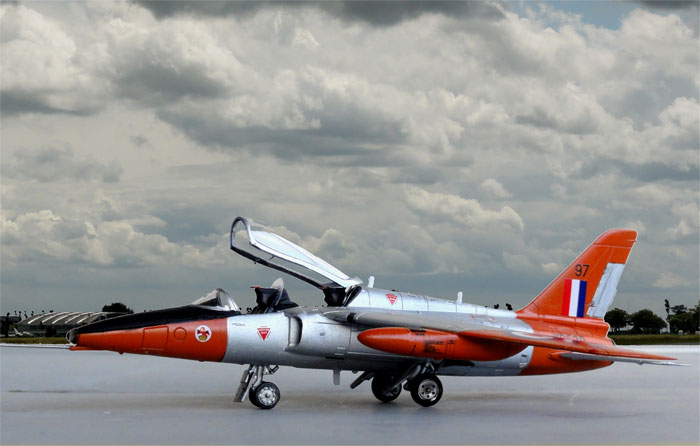1/72 scale kits of the Folland Gnat
The Gnat was a small swept-wing British light fighter aircraft developed by Folland Aircraft. The Gnat was a two seater but also a single seat version was developed called the "Midge"which was a limited success but was sold to Finland. The Gnat was also flown extensively by the Indian Air Force including a single seat variant, called the "Ajeet". The two seat Gnat was the trainer variant.
The Midge first flew in 1955 and was of a simple design with a swept wing. It was kept small to reduce costs and to meet the 1952 Operational Requirement OR.303 calling for a lightweight fighter. The Royal Air Force lost interest in the fighter, but needed the Gnat as a two-seat trainer as step up for training towards particularly the English Electric Lightning. A more powerful Orpheus engine was installed and larger tail surfaces fitted. The inboard ailerons were also changed to outbound ailerons and conventional flaps. The prototype Gnat Trainer first flew on August 1959 from Chilbolton airfield. After a while, production orders were given for the RAF beginning of the nineteen-sixties.
The first production
Gnat T.1 aircraft for the Royal Air Force were delivered in February 1962
to the Central Flying School at RAF Little Rissington. Over 100 aircraft
were build by the Hawker Siddeley company, who had taken over Folland.
The Gnat was also used a lot at RAF Valley, the major training base in
the UK. In 1964, the Gnat was also used by the RAF aerobatic team Yellow
Jacks, later to become the famous RED ARROWS. The Gnat went out of RAF
service in 1978.
Matchbox/ Lesney issued a nice little Gnat in red and yellow plastic with a RED ARROWS scheme. Some peculiars of this kit are seen here.
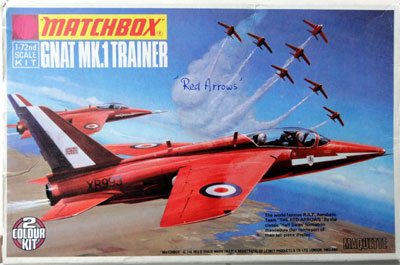
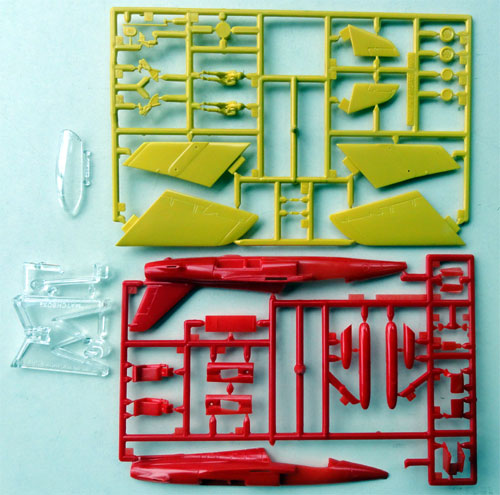
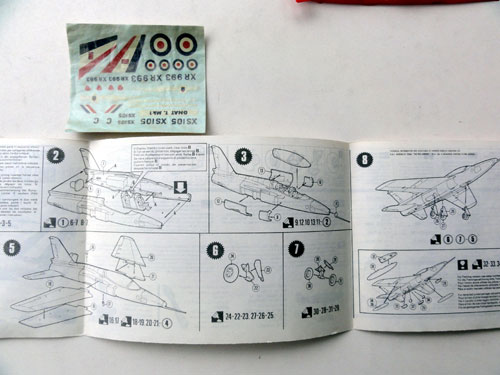
But what about other 1/72 scale kits?
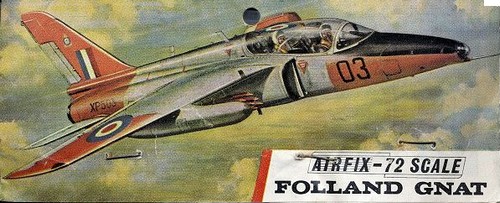
.... old and.... new....

In 2012 , Airfix came with
a complete new kit. It is excellent with fine recessed panellines, very
good detail and very good decalsheet (although for 1 aircraft).
It has about 50 parts and is very
cheap! Lots of them can be bought and made for the model collection, so
I got 2 kits.
The kit plastic is very soft, so
take care when cutting loose the very small parts.
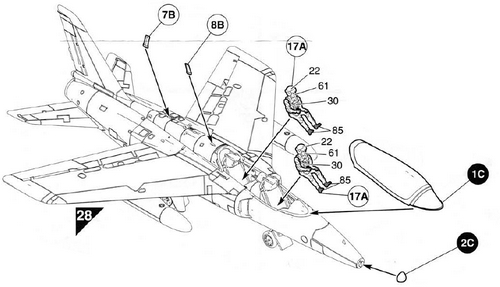
This model really is a straight forward
build, and the model was made as per instructions.
The scheme is for the RAF Central
Flying School Gnat.
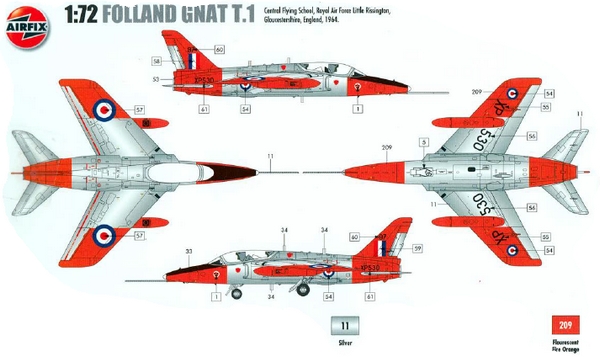
Filler was needed particulary at
the intakes and the underwing leading edge tanks.
The parts are very very fine, so
I had some very tiny gaps at the fuselage joints as well. Small amounts
of putty were set and sanded after drying out.
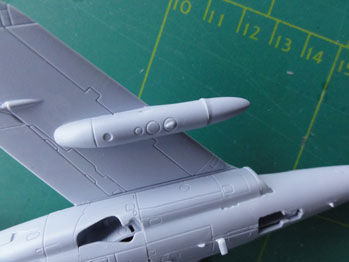 .
.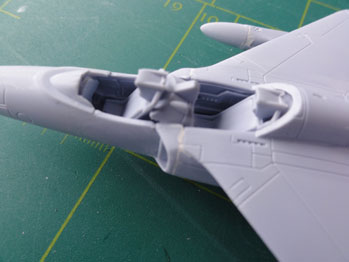
Filler was also needed at the rear
fuselage.
The control surfaces like the ailerons,
rudder and flaps got sawed in gaps, done with a TIGER razorsaw. This makes
things look better.
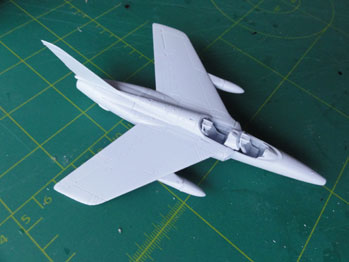
The model was ready to get its paint
scheme
MODEL 1 : RAF jet trainer , Central Flying School
The first kit to be built is the new AIRFIX kit and is as per kit scheme, for a Royal Air Force trainer at Little Rissington, 1964

Most work with this scheme is to apply the colourfull scheme as in the kit, with a nice aluminium scheme and bright orange panels.
First, the overall model got a light grey base coat. Next came the orange coat, with the following paints used:
For the Aluminium/ natural metal: ALCLAD II with normal aluminium; note that I did NOT apply a goss black coat here first as instructed by ALCLAD. I thought that would a bit too shiny for such a small model.
For the Orange: Revell acrylic 36130 (from the square blue Revell paint container)
NOTE: masking the wing tanks is a lot of work, but you can not fit these tanks later on, as they do not fit very well, filler and sanding is needed.
A lot of very small stencilling is
on the decalsheet and it took quite some time to apply all the decals.
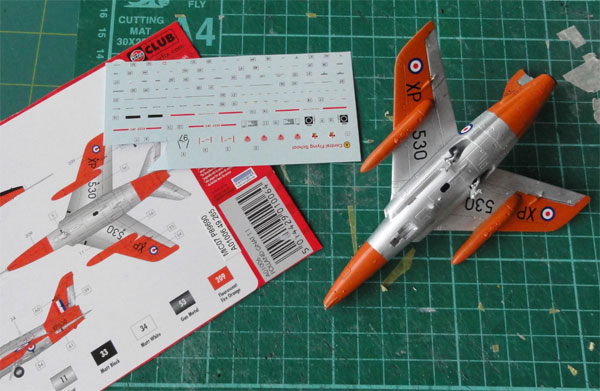
The cockpit go some extra detail, particuylarly the missing clear screen between the forward seat and aft seat. This screen protects the rear pilot during a bird strike or ejection. Most cockpit details are medium grey with black details. The seats go traps made from decalstripes and tape.
Cockpit hood and windscreen were handpainted.
The nose pitot was replaced and made
from a metal needle. In the cockpit, only the seats got a ejection release
handle on top of the seats. For the instrument panels, kit decals are supplied.

A little wash only was applied on the recessed panels of the ailerons and flaps with PROMODELLER wash.
After applying the decals as per instructions, the model got a decal protecting coat of Johnson Future/ Pledge with the airbrush.
Some views of
the completed model.....
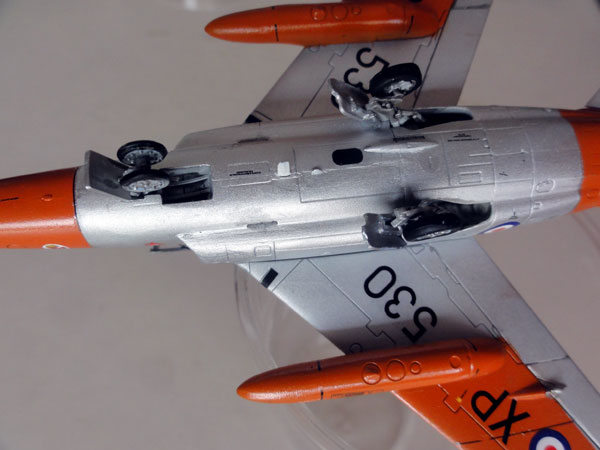
A nice addition to my British trainer model collection.
MODEL 2: Test aircraft RAE Bedford
The second model was finished as a
test aircraft at RAE Flight Systems at Bedford, UK, 1982.
I got a nice decal sheet from AIRDECAL,
set 7211, Raspberry Ripple PART 2.
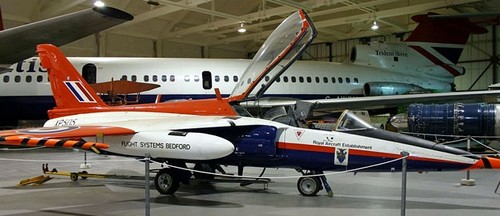

This Gnat is
a T1 with a special nose pitot and wing tipe probes, seen above in a museum.
The new Airfix kit was assembled as
indicated above, but a long nose tube was added. This tube was made from
a metal needle. A gap was drilled into the nose to get a string joint.
The tube was blended into the nose with filler.
At the wingtips, also 2 probes are
needed but these are set on later to avoid breaking them off.
First filling and sanding is needed....
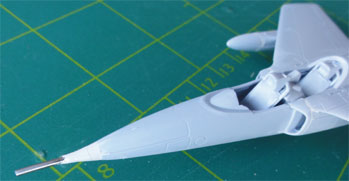
Here also some other amounts of filler
needed is seen...
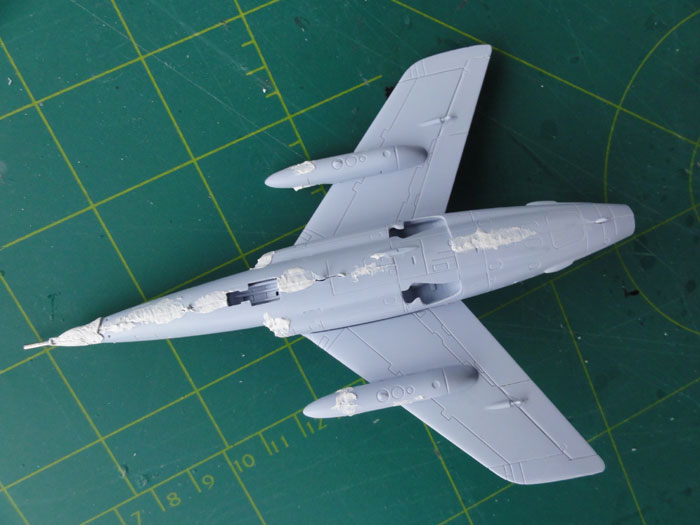
and after sanding.....
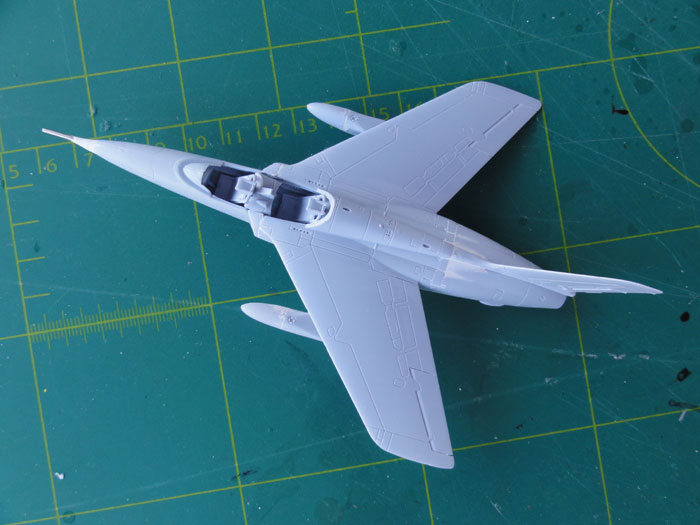
I did not bother too much about the cockpit interior, and the midscreen was not fitted as I could not see it on pictures for this Bedford test aircraft.
In the cockpit interior, I applied
a black interior coat for the test aircraft. The seats got a ejection release
handle on top of the seats. For the instrument panels, kit decals are supplied.
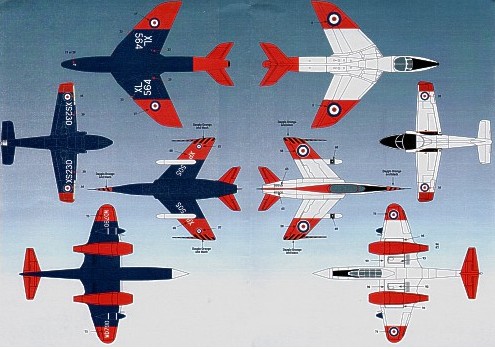
The RAE Bedford paint
scheme is quite challenging, but fortunately the AIRDECAL
7211 sheet does provide the red
demarcation lines and the decals are accurate.
Colours needed are white, red and
blue, using:
White: Revell acrylic 360301
Red: Revell acrylic 36131
Blue: Revell acrylic 36156
(these are the paints in the Revell
blue square paint containers...)
Start with a light grey base coat using your airbrush. Then do the white overall, mask the red and do the blue.
The decals are quite brittle but went on fine. I only added a few stencilling decals from the Airfix kit, not a lot was discovered on actual Gnat T1 pictures of the Bedford aircraft.
The 2 wing tip probes were added made from plastic rod. The black striping on the wing tips and nose are NOT on the decal sheet. These black stripes were marked with a black waterproof marker.
After applying the decals as per instructions, also this model got a decal protecting coat of Johnson Future/ Pledge with the airbrush.
![]()
The end result of this colourfull
model is seen here:
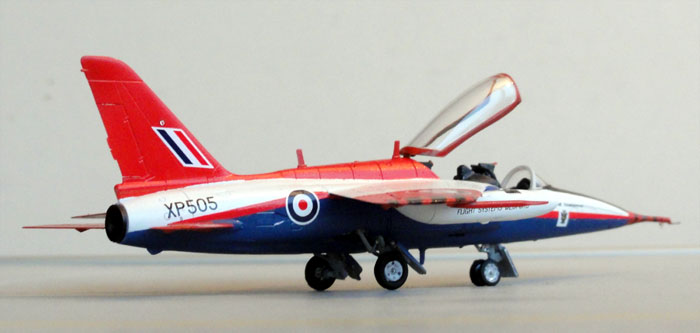
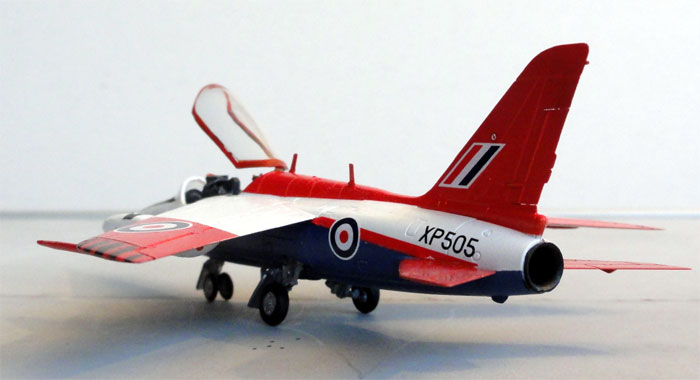
ETPS
GNAT T1 XP505

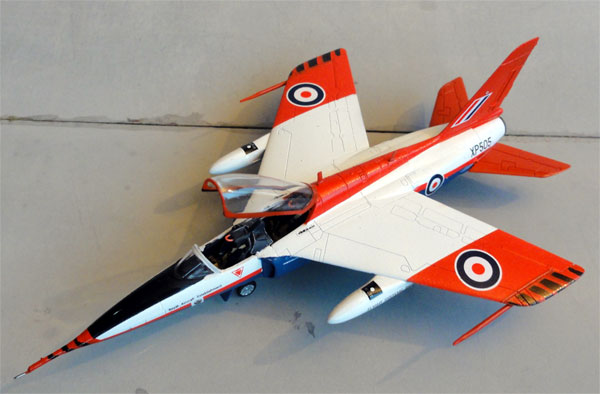
![]()
Note the large probes on the wingtips
and pitot on the nose.
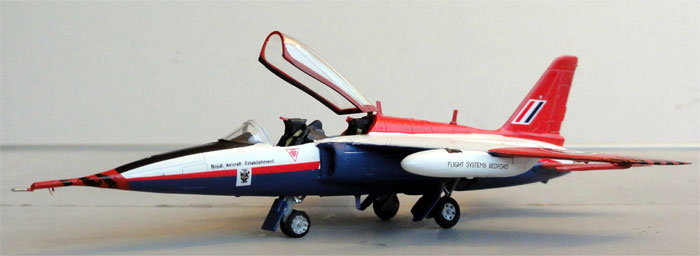

How about other British test aircraft,
like those at Bedford or the Test Pilot School Boscombe Down? These are
also on the AIRDECAL sheet...... Look here for other Boscombe
Down aircraft...
Also check out the single seat HAL
Ajeet on this page.....
Back to 1/72 Models.......

(c) Copyright Meindert "designer"/ All rights reserved. Your comments are welcomed by webmaster
Created this page
December 14, 2012
